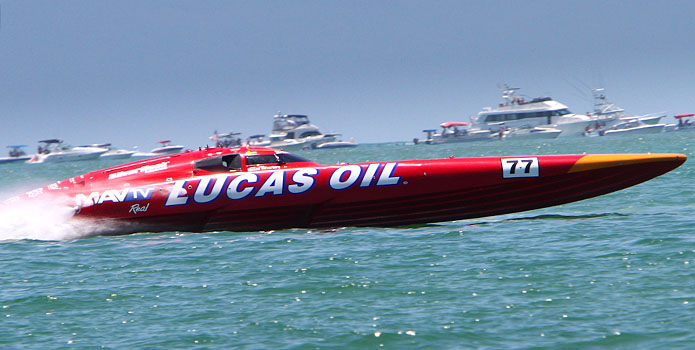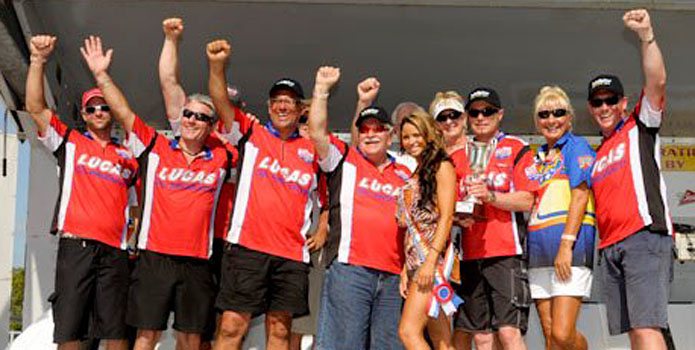Lucas Oil SilverHook—A Year in the Making
A little more than a year after offshore racers Nigel Hook and Michael Silfverberg shipped their brand new model—a 48-foot SilverHook (named after the two owners)—to a race in Malta, the teammates are starting to take advantage of the knowledge they’ve gained while competing in and testing the unique V-bottom.

And while the boat was fast—its average lap speed was 97.25 mph—and it exhibited good handling in and out of turns in the fairly calm Sarasota waters, Hook knows there’s a lot more to learn in the boat, which is powered by twin 930-hp Sterling Performance engines connected to BPM shaft drives.
“What we’ve really learned along the way was how different this V-hull is from anything out there,” said Hook, who lives in San Diego and has been the throttleman alongside driver Silfverberg, who hails from Sweden, for the past four years. “Beyond a handful of boats built for endurance runs, our setup with a fixed rudder and fixed shaft drives is unheard of—we’re in an area where there’s very little precedence.

The team hasn’t been able to test as much as it would like, but Hook said it is learning a lot from the technology available nowadays. The boat, which was built by Mystic Powerboats, is rigged with four cameras and telemetry equipment so the team can gather in-race information and analyze post-race analytics with a visual of what was happening at that moment.
“It’s not like the old-fashioned way we used to test boats,” Hook said with a laugh. “Everything is saved on the computer and we can look at it all. Our efficiency around the course and with fuel consumption has improved dramatically.”
Related stories

